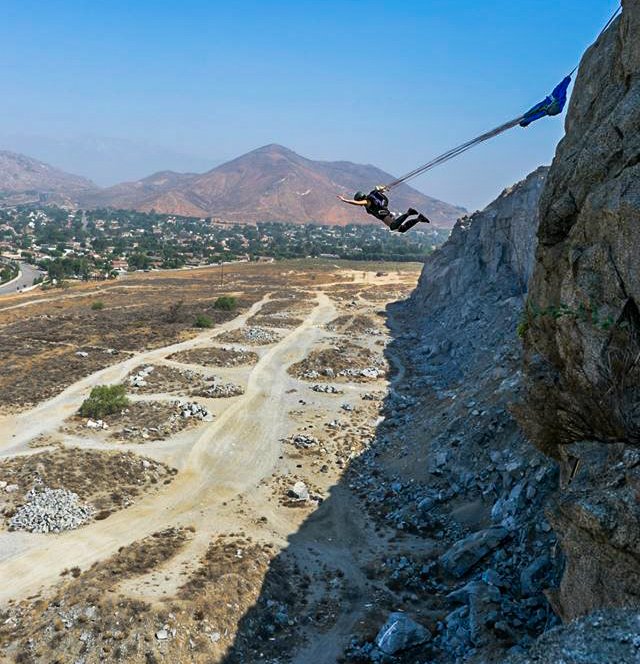Extreme Sports (BASE jumping) and Preparation
If there is one common rule that spans across all action/adventure sports, no matter the level of “extreme” they possess, it’s to practice safety and self reliance. Without these two crucial components present in the decision making process, the athlete or participant has a very slim chance of making it out unscathed. Some survive purely with luck, but as we all know luck runs out. It’s best to be well prepared prior to embarking on any adventurous journey.
BASE jumping, like many other sports have been labeled “Extreme”. To the onlooker it is a crazy, adrenaline packed sport that attracts the misfits, the people with a screw loose, because why would anyone want to fall off a cliff? I am one of those people. For those of you who don’t know BASE is an acronym which stands for Building, Antenna, Span and Earth. The act of BASE jumping is to jumping from these four main objects with a parachute on your back. Unlike with skydiving out of an airplane, a base jumping parachute system only has one main parachute, not a main and a reserve. BASE jumpers have one chance for success, which makes safety and preparation crucial!

There are many different disciplines that fall under the sport of BASE jumping. There’s Wingsuit BASE jumping from high cliffs and buildings that allow you to soar almost like a bird. Track suit jumping that propels you forward using your body and a special suit to give you maximized distance while allowing your arms and legs to move freely, and then there is just BASE jumping. Jumping from an object, no specialized clothing, and opening a parachute to land safely on the ground. A standard free fall time during BASE jump in the US will range from 1-10 seconds depending on the height of the object you leap from. The tall it is the longer free fall you will get. Longer free fall and taller jumps aren’t always safer. Just as lower jumps aren’t necessarily more dangerous. Each individual object has their own very unique traits and every jump has to be approached differently to ensure the best possible outcome.
Just like in many other extreme sports most of what we as athletes do is identify risk and figure out the best way to mitigate that risk. Our sport has inherent danger associated with it. We arguably have millions of years worth of DNA pumping through our veins telling us that if we jump, we’re going to die! That knowledge, that feeling that’s engrained with in us creates fear. Fear is totally normal and healthy to experience, but our goal is to regains that fear and push past it in the safest way possible. Generally speaking some of the best ways to mitigate risk is to firs and foremost know your ability level, know what you are capable of and what you are not yet able to do. The next step is to operate well below your ability level because some times things don’t go as planned and if you are giving 100% then you have no room to correct an error or deal with a situation. The next greatest thing is to be aware of the company you keep. In BASE jumping there is a really strong group mentality that factors into safety. It is almost like borrowed confidence. You are hanging out in a group and one person might be really experienced and ready to accept the risk associated with a specific jump, but another jumper might not be/ Because of the group mentality it is not uncommon to see new or inexperienced jumpers making bad decisions because other more experienced jumpers decided for themselves that they were comfortable with it!
Although there are many similarities in how to prepare for a high jump and a low jump, some of the risk factors are very different.

Unlike with very tall objects where you gain separation from the object in free fall. Shorter jumps, Sub 300ft, The separation a jumper experiences from the object they jumped is minimized. This increases the risk level significantly. Safety comes from separation and separation is a result of time spent in the air. Lower jumps equals less time in the air which equals less separation. The biggest risk factor associated with jumping lower objects with minimal separation is the potential for an object strike. If for some reason the parachute does not open perfectly on heading (forward facing) and your body is closer to the object, the time a jumper has to correct the problem is very short. If the reaction time of the jumper is not immediate, there is the potential for an object strike, Hitting the object they just jumped off of at a high speed. Object strikes are incredibility dangerous and account for a high percentage of BASE jumping related injuries. When your body and parachute hit an object not only does the jumper suffer from the initial impact but there is a huge possibility of
Either getting hung up on a snag point and dangling sometimes hundreds of feet in the air by something that could give away at any given time. Leaving the jumper suspended in the air waiting for rescue.
striking the object multiple times on the way down before hitting the ground with incredible force.
Another risk factor to consider when making low jumps is the reduced time under the parachute and the fact that the jumper is opening his/her parachute much closer to the ground. When making short jumps even milliseconds count! The jumpers timing has to be perfect with opening his/her parachute, Fatalities resulting in a low pull or mistimed pull has not been uncommon in the past. Ideally a jumper would open high enough to have the ability to fix any potential issues and still have time to safely make their way to the landing area. Typically speaking, with more time under parachute a jumper has a better chance of landing safely. When jumping low objects the time spent under canopy is minimized giving the jumper very little option to correct an issue or find an alternate landing area.
Over all the stakes can be much higher when participating in low jumps, but as with anything, proper preparation, having a good head on your shoulders, having the ability to react quickly and accurately under pressure and not being afraid to walk away if things aren’t right will give you the best chance at making each jump a successful jump. BASE jumpers don’t have a death wish as most people believe. Instead we have a life wish. A desire to push ourselves to our limits and beyond. Challenging what were told we are capable of and moving past the fear in an educated and calculated way. Safety in all we do should always be our number 1 priority, but that doesn’t mean we can’t have fun at the same time!

good post friend
Thank you very much @Adrian11